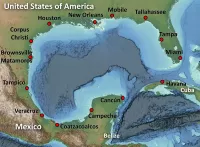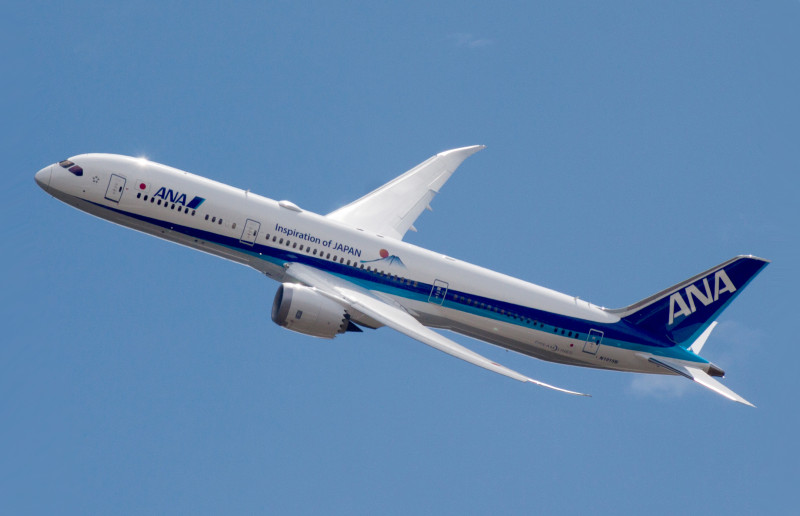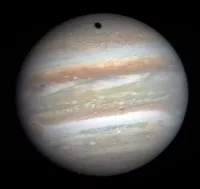The Deepwater Horizon disaster occurred on April 20, 2010, in the Gulf of Mexico. A blowout on the Transocean-owned, BP-operated offshore drilling rig triggered an explosion, resulting in the death of 11 crew members. The ensuing fire proved uncontrollable, and the rig collapsed two days later. This caused an uncapped well to leak, leading to the largest marine oil spill in history and causing immense environmental damage and economic repercussions for the Gulf Coast region.
December 1998: Construction Started
In December 1998, construction of the Deepwater Horizon rig began by Hyundai Heavy Industries in Ulsan, South Korea.
March 2000: Keel Laid
On March 21, 2000, the keel was laid for the Deepwater Horizon rig.
February 2001: Rig Delivery
On February 23, 2001, the Deepwater Horizon rig was delivered after Transocean acquired R&B Falcon.
August 2001: Transfer Document Date
According to R&B Falcon's filings to the SEC in 2001, the transfer document between R&B Falcon and Transocean was dated August 17, 2001, and the rig was specified as "official registration number of 29273-PEXT-1, IMO number of 8764597, with gross tonnage of 32,588 and net tonnage of 9,778" and the transfer value as US$340 million.
2001: Deepwater Horizon Build
In 2001, the Deepwater Horizon rig was built in South Korea by Hyundai Heavy Industries and commissioned by R&B Falcon and leased to BP.
2002: Non-Compliance Citations
In 2002, the Deepwater Horizon rig received 4 citations for non-compliance related to safety, including the blowout preventer.
2003: Non-Compliance Citation for Pollution
In 2003, the Deepwater Horizon rig received a citation for non-compliance related to pollution.
December 2004: Registered in Panama
Until December 29, 2004, the Deepwater Horizon rig was registered in the Republic of Panama.
2004: Lease Renewed
In 2004, the lease of the Deepwater Horizon rig to BP was renewed for a year.
2005: Lease Renewed for Five Years
In 2005, the lease of the Deepwater Horizon rig to BP was renewed for five years.
2006: Oil discovered in Kaskida oil field
In 2006, the Deepwater Horizon discovered oil in the Kaskida oil field.
2007: "One of the most powerful rigs in the world"
In 2007, Deepwater Horizon was described as "one of the most powerful rigs in the world".
2007: Electrical Equipment Citation
In 2007, the Deepwater Horizon rig received a sixth citation related to non-grounded electrical equipment, which was later withdrawn.
2007: Semi-Permanent Production Platforms
In 2007, the Deepwater Horizon rig was scheduled to move to its next roles as semi-permanent production platforms, initially at the Tiber site followed by a return to the Kaskida field, an oil dome 50 miles off the coast of Louisiana.
September 2009: Deepest Oil Well Drilled
In September 2009, the Deepwater Horizon rig drilled the deepest oil well in history at the Tiber Oil Field, reaching a vertical depth of 35,050 ft (10,683 m) and a measured depth of 35,055 ft (10,685 m).
2009: BP Acquired Macondo Prospect
In 2009, BP acquired the Macondo prospect exploration rights, jointly owning it with Anadarko Petroleum (25%) and MOEX Offshore 2007 (10%).
2009: Discovery of "giant" Tiber oil field
In 2009, the Deepwater Horizon discovered the "giant" Tiber oil field, with the well reaching a true vertical depth of 35,050 ft (10,683 m) and a measured depth of 35,055 ft (10,685 m).
2009: Industry Model for Safety
In 2009, the Minerals Management Service heralded the Deepwater Horizon rig as an industry model for safety.
2009: Lease Renewed for Three Years
In 2009, the lease of the Deepwater Horizon rig to BP was renewed for three years, covering 2010 to 2013, for $544 million.
February 2010: Drilling at Macondo Prospect
In February 2010, the Deepwater Horizon rig commenced drilling an exploratory well at the Macondo Prospect, approximately 41 miles (66 km) off the southeast coast of Louisiana.
April 2010: Sinking of Deepwater Horizon
After approximately 36 hours after the initial explosion, the Deepwater Horizon rig sank on April 22, 2010. The remains were located on the seafloor approximately 1,500 metres (4,900 ft) deep.
April 2010: Deepwater Horizon Blowout and Explosion
In April 2010, the Deepwater Horizon drilling rig, operating in the Gulf of Mexico, experienced a blowout causing a fatal explosion that killed 11 crew members. The resulting fire led to the rig's collapse on April 22, 2010, causing a major oil spill at the seabed, the largest marine oil spill in history.
April 2010: Halliburton Cementing Decisions
In April 2010, the OptiCem cement modeling system, used by Halliburton, played a crucial role in cement slurry mix and support decisions, which later became a focus of investigations into the Deepwater Horizon explosion that month.
April 2010: Explosion and Oil Spill at Macondo
On April 20, 2010, while working on the Macondo site, the Deepwater Horizon rig experienced a violent explosion that led to its destruction and the subsequent oil spill, which became the largest offshore spill to date, causing 40 miles (64 km) of coastal pollution.
May 2010: Insurance Settlement for Deepwater Horizon Total Loss
Around May 5, 2010, Transocean received an early partial insurance settlement of US$401 million for the total loss of the Deepwater Horizon rig.
June 2010: Minerals Management Service Renamed
On June 18, 2010, the Minerals Management Service was renamed to the Bureau of Ocean Energy Management, Regulation and Enforcement (BOE) and served as the regulatory and inspecting body for offshore oil drilling and rigs in the United States.
June 2010: Unknown Litigation
As of June 2010, litigation, ultimate assessment of damage, and the scope of final insurance recovery were all unknown, with analysts reporting that the aftermath was of unprecedented scale and complexity.
July 2010: Unprecedented Scale Litigation
In July 2010, an analysis by the Financial Times cited legal sources as saying that the scale of the litigation surrounding the Deepwater Horizon disaster was unprecedented, making it difficult to aggregate cases into class actions, and litigation was discussed in terms of a 20-year timescale.
September 2010: Well Declared "Effectively Dead"
On September 19, 2010, relief wells were used to permanently seal the Deepwater Horizon well, which was declared "effectively dead".
2010: Insured Value
As of 2010, the Deepwater Horizon rig was insured for US$560 million covering the replacement cost and wreckage removal.
2010: Compensation Deal
In 2010, BP initially estimated it would pay about $7.8bn to compensate victims.
2010: Deepwater Offshore Rig
In 2010, the Deepwater Horizon was one of approximately 200 deepwater offshore rigs capable of drilling in waters deeper than 5,000 ft (1,500 m).
2010: Lease Renewal in Effect
In 2010, the three-year lease renewal from 2009 for the Deepwater Horizon rig was in effect, with a value of $544 million.
2010: Deepwater Horizon explosion
The biographical disaster movie Deepwater Horizon, released in 2016, depicts the events of the 2010 Deepwater Horizon explosion and subsequent oil spill.
January 2013: Transocean Clean Water Act Settlement
In January 2013, Transocean agreed to pay US$1.4 billion for violations of the US Clean Water Act related to the Deepwater Horizon oil spill.
September 2013: End of BP Lease
In September 2013, BP's lease of the Deepwater Horizon rig, which had been in effect since 2001, came to an end.
2013: Lease Renewal Ending
In 2013, the three-year lease renewal from 2009 for the Deepwater Horizon rig was ending.
September 2014: Halliburton and BP Legal Rulings
In September 2014, Halliburton agreed to settle a large percentage of legal claims against them by paying $1.1 billion into a trust and U.S. District Judge Carl Barbier ruled BP was guilty of gross negligence and willful misconduct, while describing Transocean's and Halliburton's actions as "negligent".
December 2014: US Supreme Court Rejects BP's Challenge
On December 8, 2014, the US Supreme Court rejected BP's legal challenge to a compensation deal for the 2010 Gulf of Mexico oil spill.
2016: Release of Deepwater Horizon disaster movie
The disaster movie Deepwater Horizon, which depicts the events of the 2010 Deepwater Horizon explosion and subsequent oil spill, was released in 2016. The movie is based on "Deepwater Horizon's Final Hours", an article published in The New York Times.
2018: Compensation claims
As of 2018, approximately 390,000 claims for compensations had been filled, with around $65bn paid in settlements; thousands of claims were still outstanding.
Mentioned in this timeline
The United States of America is a federal republic located...
Korea is a peninsular region in East Asia comprised of...
South Korea officially the Republic of Korea occupies the southern...

The Gulf of Mexico is an oceanic basin and marginal...
Mexico officially the United Mexican States is a North American...
Texas located in the South Central region of the United...
Trending
21 days ago Orix Buffaloes: Teranishi aims for two wins, Kurebayashi hits grand slam, Udagawa resumes.
1 month ago Iran Strike Briefing: Republicans Informed, Democrats Excluded, White House Disputes CNN Report

Hayden Silas Anhed nia known as Ethel Cain is an American singer-songwriter record producer and model She is known for...

22 days ago Charles Barkley Endorses Bruce Pearl for Senate Amidst Speculation and GOP Rule Concerns

47 minutes ago Blake Snell to Start for Dodgers Saturday After Shoulder Recovery Against Rays.

1 month ago Lorde releases 'Hammer,' a final 'Virgin' single, as an ode to city life.
Popular

The Boeing Dreamliner is an American wide-body airliner developed by...

Jeff Hardy is an American professional wrestler currently signed with...

Jupiter is the fifth and largest planet from the Sun...

John Michael Ozzy Osbourne is a prominent English singer songwriter...

Jeff Bezos is an American businessman renowned as the founder...

Candace Owens is an American political commentator and author known...